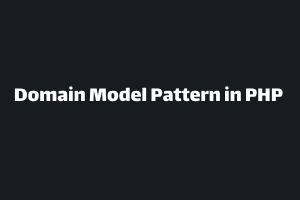When building software applications, it’s crucial to design a solid foundation that reflects the real-world concepts and relationships within your domain. One of the architectural patterns that can help you achieve this is the Domain Model pattern.
The Domain Model pattern is all about modeling your application’s core logic by creating classes that directly represent domain-specific entities and their behavior. These entities encapsulate both data (attributes) and the rules and logic (methods) associated with them.
Here are the key components of this pattern:
- Domain Objects: You create classes to represent domain-specific objects or entities. These classes should be named after real-world concepts in your application.
- Business Logic: The behavior of these domain objects encapsulates the business rules and logic of your application. They enforce rules and constraints related to their data.
- Separation of Concerns: The Domain Model pattern promotes the separation of concerns in your application. Domain objects focus on the domain, while other layers (such as controllers or services) handle application-specific tasks like user input and database interactions.
Let’s consider a simple example of a Domain Model pattern in PHP for an e-commerce application, focusing on the “Product” entity:
<?php
class Product {
private $id;
private $name;
private $price;
public function __construct($id, $name, $price) {
$this->id = $id;
$this->name = $name;
$this->price = $price;
}
// Getter and setter methods for attributes
public function getId() {
return $this->id;
}
public function getName() {
return $this->name;
}
public function getPrice() {
return $this->price;
}
// Business logic methods
public function calculateDiscountedPrice($discountPercentage) {
$discount = $this->price * ($discountPercentage / 100);
return $this->price - $discount;
}
}
In this example, we have a Product class that represents a product in our e-commerce domain. It has attributes like id, name, and price, as well as methods like calculateDiscountedPrice to perform domain-specific operations.
By following the Domain Model pattern, you encapsulate the behavior related to products within the Product class, keeping the domain logic separate from other parts of your application. This makes your code more maintainable and easier to understand, especially as the complexity of your application grows and evolves.
StudySection gives an opportunity to beginners and experts in .NET framework to go through StudySection’s .NET certification exam and get a .NET certification for enhancement of career in programming. If you have knowledge of the .NET framework then you can get a certificate through an online exam at StudySection.




